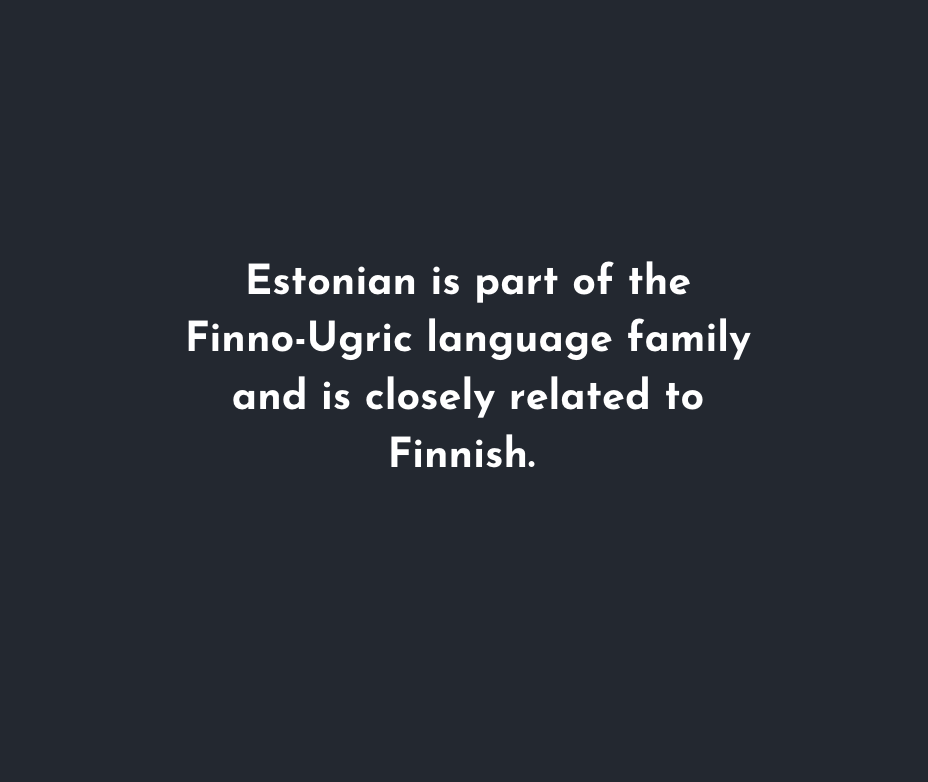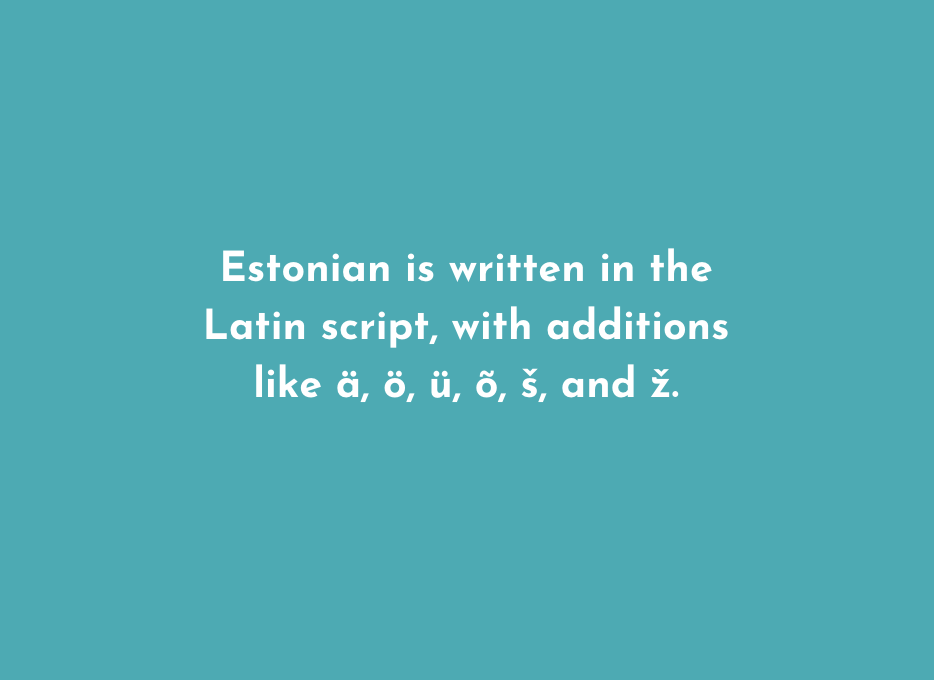English to Estonian Translation - Affordable and Competent Translators are Available Now
Need to translate text from English to Estonian? Our exceptional team of English to Estonian translators are available now to take your content to the next level. Estonian is one of the most difficult languages to translate documents into from English, but thanks to our Estonian translation services, you can go well beyond what electronic translators do. Don't paste text into these translators any more! Instead, reach out to our team!
English to Estonian Translation Tools
Translation services have transformed the process of translating text and speech from English to Estonian, greatly enhancing both precision and speed. These essential services cater to a variety of users for tasks ranging from email communication and business agreements to website localization. They facilitate effortless conversion while ensuring that the essence of the original content remains intact.
Our human translators deliver higher-quality translations than machines, and they are great not only for casual use but also crucial for professional settings where accuracy is critical.
These cost-effective options for Estonian translation ensure access to the world without requiring substantial financial investment. Leveraging native speakers’ expertise guarantees high-caliber translations that effectively capture your message’s true intent and cultural relevance when engaging with an Estonian audience.
Why Free Online Translators for English to Estonian are Dangerous
The web is saturated with free services for online translation, offering the allure of effortless Estonian translations from English. These platforms typically enable users to simply upload a file and select their target language option without incurring any fees. This convenience, however, may come at a very high cost that you won't see coming.
These free internet-based translators have gained notoriety for their poor accuracy and inability to capture the nuances of language. Although they might be just fine for informal applications or comprehending the essence of text material, they are not good at all when dealing with content that requires professional finesse or carries nuanced significance. The algorithms driving these cost-free resources commonly misread local idioms, cultural nuances, and elaborate sentence constructions which can lead to perplexing or even wholly inaccurate translations.
Consider the scenario where you need to translate legal documentation or intricate technical guides. Inaccuracies stemming from these free translators could create terrible misunderstandings along with potential financial repercussions. Thus it’s imperative to depend on humans for high-stakes content translation.
Machine Translation vs. Human Translation
Machine translation has progressed impressively, especially with translating more extensive sections of text. These technologies enable rapid translations by allowing users to easily paste and translate documents, making them a valuable asset for initial translations or situations requiring swift action. Nevertheless, the subtle appreciation of cultural contexts often falls short in machine-generated translations compared to those done by human translators who naturally speak the language.
One notable limitation of machine translation is its tendency to create inaccuracies or clumsy expressions, particularly within technical materials that encompass code or formatted data. These mistakes can totally undermine the integrity and formality of translated writing, making it inappropriate or difficult to use without additional revisions.
Despite certain translation tools offering functionalities for refining and enhancing their output, they are best used when paired with a human translator’s review process. A bilingual expert can scrutinize and improve upon these automated results so that the final document adheres to high-quality standards while faithfully delivering the original message’s intent. This method ensures both the speed you get from machine-based translations as well as the precise checks and balances that a human Estonian translator brings to the table.
Why Human English to Estonian Translators are the Best Option
When translating from English to Estonian, human translators typically outperform their machine counterparts. The sophistication of machines in language processing still falls short when it comes to fully understanding the subtle nuances and cultural references that are intrinsic to a language. This deep comprehension is vital for producing translations that aren’t just precise, but also culturally appropriate and impactful.
Human translators have a distinct advantage when dealing with complex sentences and colloquialisms which automated systems often find challenging. They possess the ability to discern the finer points of Estonian, guaranteeing that the translation preserves not only meaning but also tone. For content aimed at engaging an Estonian audience—like promotional material or literary compositions—an expert Estonian translator is indispensable for ensuring effectiveness across languages.
Humans adeptly manage sector-specific jargon and language tailored for particular contexts such as legal or technical documents where accuracy is critical. Their expertise ensures that these translations maintain both exactness relevant to context, thus preserving originality as well as professionalism within documents.
Although machine translation offers quick solutions with ease-of-use benefits, the intricacy offered by skilled human translation cannot be eclipsed by technological advancements. Opting for professional linguistic specialists significantly raises your translation’s quality level making sure they remain true-to-source while fostering cultural connections.
Effective English to Estonian Translation
Translating accurately from English into Estonian goes beyond mere linguistic capabilities. It calls for an in-depth grasp of cultural nuances. This is why we only use native Estonian-speaking translators for this service. Since language mirrors culture, grasping these subtleties is crucial for creating translations that hold significance and stay relevant.
Employing dictionaries tailored to specific contexts can be okay, but they aren’t the best. These resources are better used to help translators discern the intricacies of the Estonian language, guaranteeing the selection of the best words and phrases for your translation tasks.
By paying attention to cultural undercurrents and utilizing context-focused dictionaries, translators can achieve translations with greater precision and depth. This method not only enhances the translated material’s caliber but also assures it is fully understood by the intended recipients. This ensures the effectiveness and impact of your communications.
Common Challenges in English to Estonian Translation
The task of translating from English to Estonian has more challenges than other language translations have, specifically due to the contrasting communication styles. While English may be more indirect, Estonian’s straightforward style influences translation decisions and how subtleties are expressed.
Dealing with the 14 noun cases in Estonian also poses a substantial challenge for translators. A deep understanding of these grammatical nuances is critical for circumventing confusion and achieving precise translations. For those not well-versed in Estonian grammar, this complexity can be quite intimidating.
The absence of definite and indefinite articles in Estonian presents obstacles during translation from English because it could lead to unintentional loss of clarity when they are left out. The translator must take extra care to adapt their approach so that translated sentences maintain their intended meaning without losing coherence.
Complications arise, too, from Estonia’s lexicon, where words often have multiple interpretations. This makes contextual comprehension essential. Selecting an appropriate equivalent word based on context is key to precluding misinterpretation within translations.
Ensuring consistent tone and voice throughout all materials after translation is paramount for preserving brand identity—especially important when dealing with marketing or branding content where maintaining true representation matters significantly—and human translators prove indispensable in upholding such consistency across languages.
Order English to Estonian Translations or Content, Today
The process of converting text from English to Estonian requires a deep understanding of intricate linguistic and cultural subtleties. Although online translation tools are readily available at no cost, they are not great for formal or business translation tasks. Machine translations have come far, but still fail to grasp the delicate intricacies mastered by human translators.
Committing resources to skilled human translators guarantees that your translated material is precise, culturally appropriate, and connects meaningfully with the intended audience. Recognizing these challenges and employing successful tactics can lead to superior quality translations that successfully overcome language barriers and bolster communication.
Are you ready to order English to Estonian translation or content? Our translation team has Estonian translators standing by right now who can get your content created or translated in 24 to 72 hours. Our English to Estonian translation services are affordable, quick, and all human-generated, so you will have peace of mind that every piece of content you receive from our team is exceptional.





